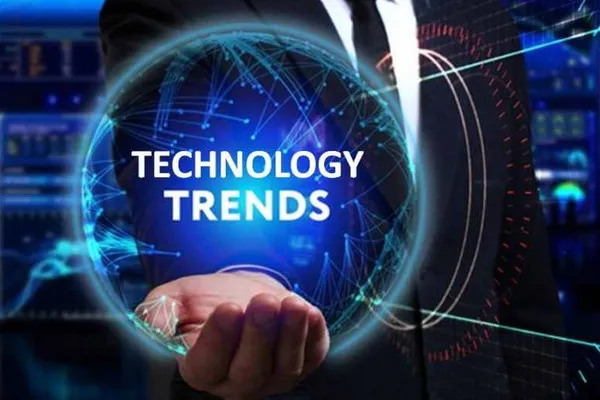In a report by Bain & Company, the post-globalization era of technology is characterized by businesses rethinking their methods and goals to build resilience against future economic shocks. With the global economic outlook for 2024 remaining uncertain, over half of chief economists anticipate a weakening economy this year. In this context, staying updated with new technology trends is crucial for CXOs and leaders aiming to devise new strategies for business growth. The report highlights five major technology trends emerging in 2024 and beyond.
1. Generative AI
Generative AI is set to be a transformative trend across various industries in 2024. Enterprises are leveraging generative AI tools for applications beyond customer service, such as developing code from natural language descriptions and maintaining it autonomously across different platforms.
A recent Deloitte report indicates that 62% of business and technology leaders among the 2,800 surveyed expressed excitement about generative AI. Additionally, 79% expect generative AI to significantly transform their organization and industry within the next three years, with 31% believing this change could occur within a year.
Generative AI is enhancing productivity through intelligent automation and addressing niche problems. For instance, startups are using AI solutions in agriculture to detect microbial pests and suggest automated remedies, aiding rural farming communities. In construction and heavy machinery, this technology simulates realistic scenarios for workforce training without actual risks. Autonomous vehicle makers use similar applications to generate accident simulations for safe self-driving function training. The chemical industry uses generative AI to create new cosmetic formulations and optimize production processes, while the textile industry benefits from operational enhancements and customer preference insights to create new designs.
Generative AI is becoming pervasive across the market, from experimenting with chatbot support functions to revamping supply chains.
2. Quantum Computing
Quantum computing is moving beyond a technical buzzword, with recent advancements in hardware and algorithmic efficiency bringing it closer to wider adoption in 2024.
Several sectors, including banking, healthcare, transportation, and energy, are already utilizing quantum computing. Industry giants like JPMorgan Chase, Goldman Sachs, and Barclays use quantum computers from companies like Honeywell and IBM for securing accounts and optimizing investment portfolios. In the defense sector, ColdQuanta was chosen by DARPA to build a scalable, cold-atom-based quantum computing hardware and software platform.
In healthcare, quantum computing is accelerating diagnostics, personalized medicine, and pricing optimization, with particular interest in quantum-enhanced machine learning techniques. Energy companies like ExxonMobil and BP use quantum computing for power system optimization, predictive environmental modeling, and precise quantum chemistry simulations to develop new materials for effective carbon capture. The chemical industry, represented by companies like Mitsubishi Chemical Corporation, uses quantum computing to speed the discovery and development of new chemical systems and materials, potentially increasing profit margins through optimal feed-stock routing, refining, and product-to-market combinations.
Increased global collaboration in quantum research is expected to accelerate its development and refinement in 2024.
3. 5G Connectivity
5G network services gained momentum last year, with Ericsson estimating that one in every five mobile network subscriptions globally was a 5G subscription by the end of 2023. 5G services accounted for approximately 35% of operators’ overall revenue that year.
5G offers significant benefits for enterprises relying on IoT and connected systems, providing ultra-low latency, private deployment options, and superior bandwidth capacity. It can accommodate ten times more devices than 4G on a single network, with advancements in network slicing making 5G more affordable for mid-sized companies.
The healthcare industry uses 5G for fast, reliable health data measurement, always-on device connectivity, and efficient data management, with trials for robot-enabled care. Automotive giants like Toyota, Volkswagen, and General Motors are researching 5G to enable connectivity features on their vehicle-to-everything (V2X) systems.
4. Extended Reality (VR/AR/XR)
2024 is expected to be a monumental year for extended reality applications and devices, with advancements in processing power and highly anticipated products like Apple’s Vision Pro.
Manufacturing companies are using AR smart glasses to speed up production, increase compliance with protocols, and reduce training times by providing hands-free instructional support to workers. AR is also making its way into sports, with devices like Vuzix Labs’ Smart Swim providing swimmers with workout status and performance information.
In healthcare, AR apps like MEVIS Surgery offer detailed AR-powered healthcare delivery content for learners, and virtual reality exposure therapy (VRET) is extensively used to treat PTSD patients. Startups are exploring the metaverse for virtual meetings and collaborative activities, with this trend expected to grow throughout the year.
5. Edge Computing
In 2024, enterprises will increasingly leverage the emerging edge-as-a-service (EaaS) business model to scale resources without costly infrastructure investments. EaaS can enable asset recovery, predictive analysis, edge device management, tracking, and software and operation automation.
Integrations between edge and cloud computing will rise, combining edge systems’ lower latency with the cloud’s flexibility to support IoT projects, autonomous vehicles, and smart cities efficiently.
Conclusion
The trends highlighted above are set to shape 2024 and beyond, with significant implications for various industries. Business leaders can gain further insights through landscape analyses to understand their positions and plan their next steps. Extensive R&D resources on these innovations are available for exploration, providing a comprehensive understanding of the evolving technology landscape.
